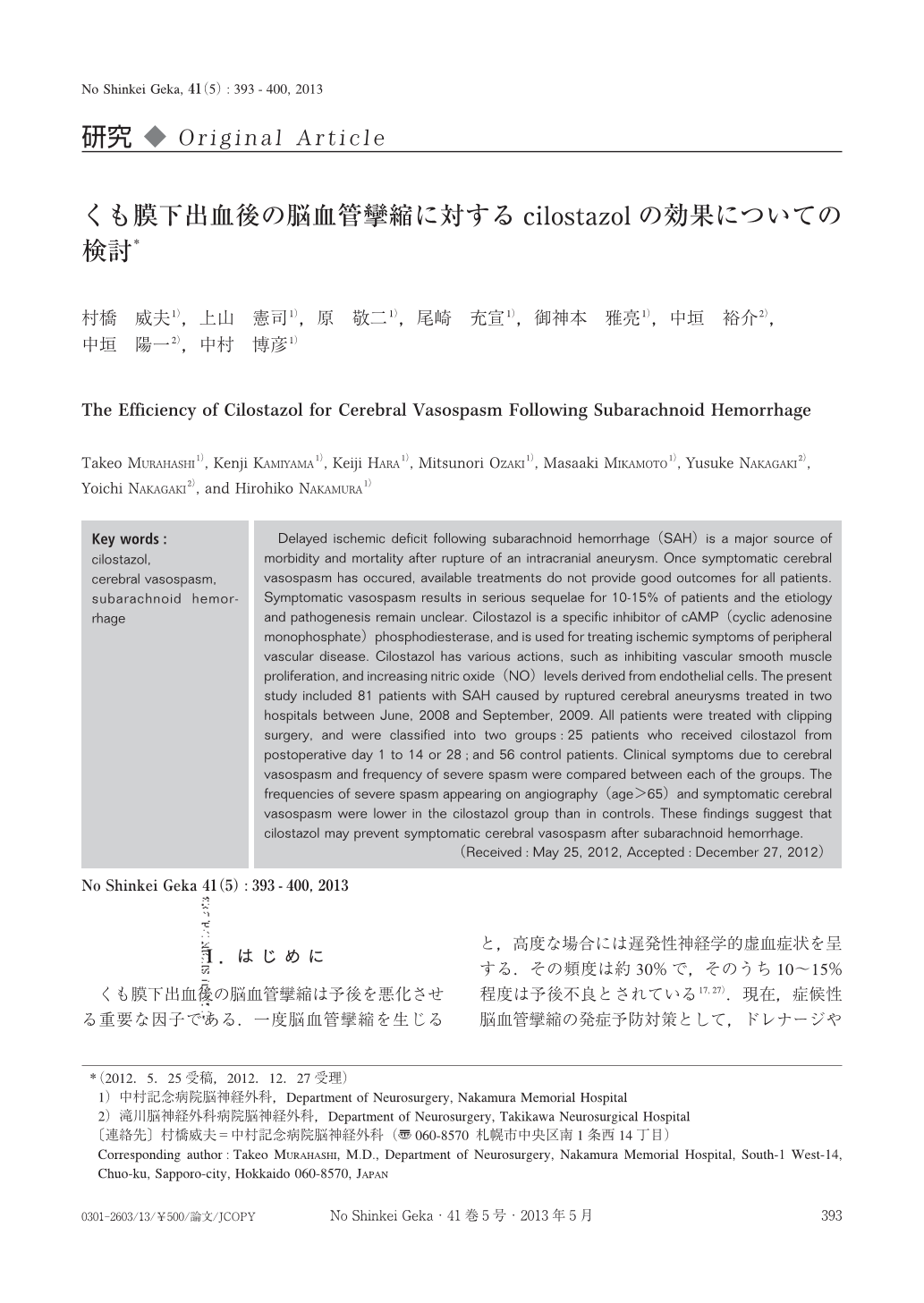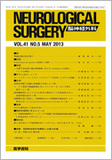Japanese
English
- 有料閲覧
- Abstract 文献概要
- 1ページ目 Look Inside
- 参考文献 Reference
Ⅰ.はじめに
くも膜下出血後の脳血管攣縮は予後を悪化させる重要な因子である.一度脳血管攣縮を生じると,高度な場合には遅発性神経学的虚血症状を呈する.その頻度は約30%で,そのうち10~15%程度は予後不良とされている17,27).現在,症候性脳血管攣縮の発症予防対策として,ドレナージや脳室脳槽灌流を使用した血腫除去,ウロキナーゼなどの抗凝固薬脳槽内投与,塩酸ファスジル投与などが行われている13,29).またtriple H療法の実施や症候性の場合にはballoon angioplastyや薬物の選択的動脈内注入などの治療を施行することもある.
しかし,このような治療を行ってもなお高度な脳血管攣縮を引き起こし,それが原因で脳梗塞に陥り,永続的な後遺症や致死的な状態につながり得る.脳血管攣縮は単なる血管の攣縮と違い,出血後血管の狭窄まで数日間あり,1~2週間持続することが特徴である.脳血管攣縮に関しては,これまで分子生理学的研究や,動物実験などさまざまな方面からapproachがなされてきたが,未だその病態の全容解明には至っていないのが現状である.
Cilostazolは,血管平滑筋細胞に存在するphosphodiesterase 3A(PDE3A)を阻害し血管平滑筋を弛緩させる作用をもつ抗血小板薬である.抗血小板薬であるため,当然のことながら血小板活性低下作用を有しているが,そのほかに血管拡張作用1),細胞接着因子の発現抑制24),内皮細胞機能改善8,9)などの多面的な効果を有していると言われている.今回,われわれはcilostazolのこのような多面的な作用に注目し,脳血管攣縮に対する予防効果について臨床像に着目して検討した.
Delayed ischemic deficit following subarachnoid hemorrhage(SAH)is a major source of morbidity and mortality after rupture of an intracranial aneurysm. Once symptomatic cerebral vasospasm has occured, available treatments do not provide good outcomes for all patients. Symptomatic vasospasm results in serious sequelae for 10-15% of patients and the etiology and pathogenesis remain unclear. Cilostazol is a specific inhibitor of cAMP(cyclic adenosine monophosphate)phosphodiesterase, and is used for treating ischemic symptoms of peripheral vascular disease. Cilostazol has various actions, such as inhibiting vascular smooth muscle proliferation, and increasing nitric oxide(NO)levels derived from endothelial cells. The present study included 81 patients with SAH caused by ruptured cerebral aneurysms treated in two hospitals between June, 2008 and September, 2009. All patients were treated with clipping surgery, and were classified into two groups: 25 patients who received cilostazol from postoperative day 1 to 14 or 28; and 56 control patients. Clinical symptoms due to cerebral vasospasm and frequency of severe spasm were compared between each of the groups. The frequencies of severe spasm appearing on angiography(age>65)and symptomatic cerebral vasospasm were lower in the cilostazol group than in controls. These findings suggest that cilostazol may prevent symptomatic cerebral vasospasm after subarachnoid hemorrhage.

Copyright © 2013, Igaku-Shoin Ltd. All rights reserved.


